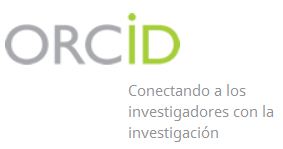Hikikomori: Syndrome of Extreme Social Isolation in Adolescents and Young People
Keywords:
Hikikomori, information and communication technologies, adolescents, young people, social isolation, mental healthAbstract
Introduction: The excessive use of technologies related to communications between adolescents and young people gives rise to situations such as the appearance of technological addictions and psychopathological disorders associated with them, as is the case of the Hikikomori.
Objective: To describe the characteristics of Hikikomori Syndrome.
Methods: A bibliographic review was carried out from June to July, 2020. The PubMed/Medline, SciELO, ands Science Direct databases were consulted. Google Scholar search engine was also used. The search engines of the different sources were employed, and a search strategy was designed through keywords in Spanish and English. 21 references were selected for our study.
Conclusions: Hikikomori is a syndrome characterized by extreme social isolation in adolescents and young people, associated with addiction to information and communication technologies. It was initially reported in Japan, but it has rapidly spread to the western world. It usually presents comorbidity with depression and other psychiatric disorders. Promoting prosocial conditions is one of the pillars to face this entity.
Downloads
References
2. Águila Calero G, Díaz Quiñones JA, Díaz Martínez PM. Adolescencia y tecnologías de la información y comunicaciones. Un reto para la sociedad cubana actual. Medisur. 2018 [acceso: 9/7/2020]; 16(5):711-4. Disponible en: http://scielo.sld.cu/pdf/ms/v16n5/ms13516.pdf
3. Garrote-Rojas D, Jiménez-Fernández S, Gómez-Barreto IM. Problemas derivados del uso de internet y el teléfono móvil en estudiantes universitarios. Formación Universitaria. 2018 [acceso: 9/7/2020]; 11(2):99-108. Disponible en: https://scielo.conicyt.cl/pdf/formuniv/v11n2/0718-5006-formuniv-11-02-00099.pdf
4. Fundación Pfizer. La juventud y las redes sociales en internet. 2009. [acceso: 13/6/2020]. Disponible en: https://goo.gl/cbrCSn
5. Melendro Estefanía M, García Castilla FJ, Goig Martínez R. El uso de las TIC en el ocio y la formación de los jóvenes vulnerables. Revista Española de Pedagogía. 2016 [acceso: 29/6/2020]; LXXIV (263):71-89. Disponible en: https://www.jstor.org/stable/24711269?seq=1
6. Terrero A. Desconectarse a la cubana: retos de un nuevo usuario. Periódico Granma. 2017 Sep 25. [acceso: 12/7/2020] Disponible en: http://www.granma.cu/cuba/2017-06-17/descone ctarse-a-la-cubana-retos-de-un-nuevo-usuario-1306-2017-22-06-01
7. Álvarez de Mon MA, Pereira Sánchez V, Quintero LA. Aislamiento social prolongado. Hikikomori: un fenómeno creciente en Occidente. Medicina-Programa de Formación Médica Continuada Acreditado. 2019 [acceso: 29/6/2020]; 12(92):5427-33. Disponible en: https://www.sciencedirect.com/science/article/pii/S0304541219303130
8. Kato TA, Kanba S, Teo AR. Hikikomori: experience in Japan and international relevance. World Psychiatry. 2018;17(1):105–6. PMCID: PMC5775123
9. Becedas López A, Aragonés Callejas M, Eguiluz Fernández M, Sotomayor Sáez MA, Fernández Montero R. Relevancia clínica del abordaje enfermero a adolescentes en domicilio. “Síndrome de Hikikomori”. A propósito de un caso. XXXV Congreso de Enfermería de Salud Mental. Santiago de Compostela; 2018 marz 21-23. [acceso: 22/6/2020]. Disponible en: http://www.postermedic.com/parcdesalutmar/pparcdesalutmar1816190/pdfbaja/pparcdesalutmar1816190.pdf
10. Latorre Forcén P, Calvo Sarnago AI, Ruiz Lázaro PM. La gran epidemia actual: Adicción a tecnologías, “Síndrome de Hikikomori”. Revista de Psiquiatría Infanto Juvenil. 2016 [acceso: 29/6/2020]; (1):34-7. Disponible en: http://www.aepnya.eu/index.php/revistaaepnya/article/view/81/41
11. Gallego Andrada E, Gándara Martín JJ. Hikikomori y tumbados. Un análisis literario y social sobre la conducta patológica de aislamiento social. Psiquiatria.com. 2008 [acceso: 10/7/2020]; 12(4). Disponible en: http://psiqu.com/1-5964
12. Tateno M, Skokauskas N, Kato TA, Teo AR, Guerrero A. New game software (Pokémon Go) may help youth with severe social withdrawal, hikikomori. Psychiatry Res. 2016;246:848–9. PMCID: PMC5573581
13. Saorín Camacho P. Descarte juvenil en el Extremo Oriente. Una mirada desde Japón. Misión Joven. 2018 [acceso: 17/6/2020]; (498-499): 27-52. Disponible en: http://www.pastoraljuvenil.es/wp-content/uploads/2019/05/MJ498-499-05-ESTUDIOS-Pascual-Saor%C3%ADn-Camacho.pdf
14. Meng Wong JCh, Si Wan MJ, Kroneman L, Kato TA, Wing Lo T, Wai-Ching Wong P, et al. Hikikomori Phenomenon in East Asia: Regional Perspectives, Challenges, and Opportunities for Social Health Agencies. Front. Psychiatry. 2019;10:512. DOI: 10.3389/fpsyt.2019.00512
15. Hayakawa K, Kato TA, Watabe M, Teo AR, Horikawa H, Kuwano N, et al. Blood biomarkers of Hikikomori, a severe social withdrawal syndrome. Scientific Reports. 2018 [acceso: 21/6/2020]; 8:2884. Disponible en: https://www.nature.com/articles/s41598-018-21260-w.pdf
16. Black CN, Bot M, Scheffer PG, Snieder H, Penninx B. Uric acid in major depressive and anxiety disorders. J Affect Disord. 2017;225:684–690. DOI: 10.1016/j.jad.2017.09.003
17. Stip E, Thibault A, Beauchamp-Chatel A, Kisely S. Internet addiction, hikikomori syndrome, and the prodromal phase of psychosis. Front Psychiatry. 2016;7:6. DOI: 10.3389/fpsyt.2016.00006
18. Yuen JW, Yan YK, Wong VC, Tam WW, So KW, Chien WT. A physical health profile of youths living with a “Hikikomori” lifestyle. Int J Environ Res Public Health. 2018;15(2):315. DOI: 10.3390/ijerph15020315
19. Suárez Rodríguez CO, Mercerón Figarola YP, Del Toro Sánchez M, Verdecia Ortiz AL, Rojas Rivera RM. Prácticas parentales y sintomatología depresiva en adolescentes cubanos. Revista Iberoamericana de Psicología. 2019 [acceso: 13/7/2020]; 12(1):19-30. Disponible en: https://reviberopsicologia.ibero.edu.co/article/view/rip.12102
20. Beaven Ciapara NI, Campa Álvarez RA, Valenzuela BA, Guillén Lúgigo M. Inclusión educativa: factores psicosociales asociados a conducta suicida en adolescentes. Revista Prisma Social. 2018;(23):186-207.
21. Rodríguez A, Páez R, Altamirano E, Paguay F, Rodríguez C, Calero S. Nuevas perspectivas educativas orientadas a la promoción de la salud. Educación Médica Superior. 2017 [acceso: 11/7/2020]; 31(4):1-11. Disponible en: http://www.ems.sld.cu/index.php/ems/article/view/1366/583
Published
How to Cite
Issue
Section
License
Copyright (c) 2021 Revista del Hospital Psiquiátrico de La Habana

This work is licensed under a Creative Commons Attribution-NonCommercial 4.0 International License.





